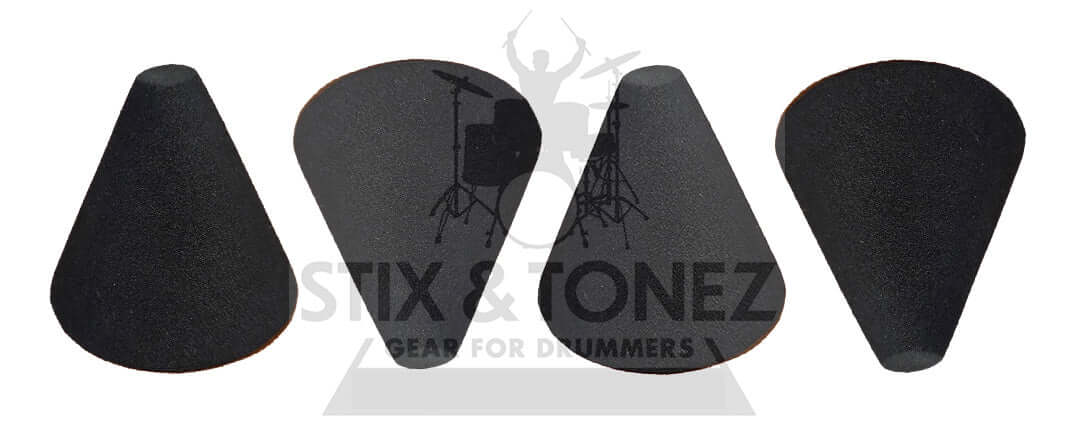Complete Kit for Easy Installation
Each trigger bar assembly comes with adjustable location holes, a 15 mm threaded rod for height tuning, a foam cone main trigger, a separate piezo trigger for rim shots, a 13 mm female stereo adaptor, and a 2 m TRS cable. Installation requires only a drum key, Phillips screwdriver, and a battery drill with a sharp 13 mm bit. The trigger bar design allows for easy adjustment and fine-tuning, making it accessible even for those new to electronic drum modification.
Universal Compatibility and Performance
These triggers are compatible with all drum modules that accept a 6.35 mm TRS cable. Once connected, they deliver responsive, accurate triggering using 35 mm piezo sensors—even under aggressive playing. With the ability to handle everything from delicate strokes to heavy hits, they’re ideal for live gigs, recording, or home practice.
Proven Piezo Technology
Bar triggers have evolved significantly since their early adoption in the 1990s. Using advanced piezo technology, our trigger bars capture vibrations from the drumhead and convert them into reliable electronic signals. This means enhanced sensitivity, reduced crosstalk, and more accurate dynamics compared to traditional microphone setups.
Size Options for Every Setup
Our triggers are available in a full range of sizes—from 8″ to 24″—making them suitable for snares, toms, floor toms, and bass drums. If your desired size isn't listed, we also offer custom options to match your setup perfectly.
Optimized Mounting and Sound Control
Proper mounting is key to optimal performance. The trigger should be securely attached inside the drum shell using the included hardware and double-sided tape. The drum head’s thickness and material also affect how the foam cone interacts with the piezo, so it’s important to adjust settings accordingly on your module to reduce hotspots and ensure even triggering.
Built for Drummers of All Levels
These trigger bars are perfect for anyone looking to modernize their kit without losing the traditional feel and look of acoustic drums. Whether you're upgrading an existing setup or building your own electric drum kit from scratch, our foam cone trigger bars provide the durability, playability, and versatility drummers need.












